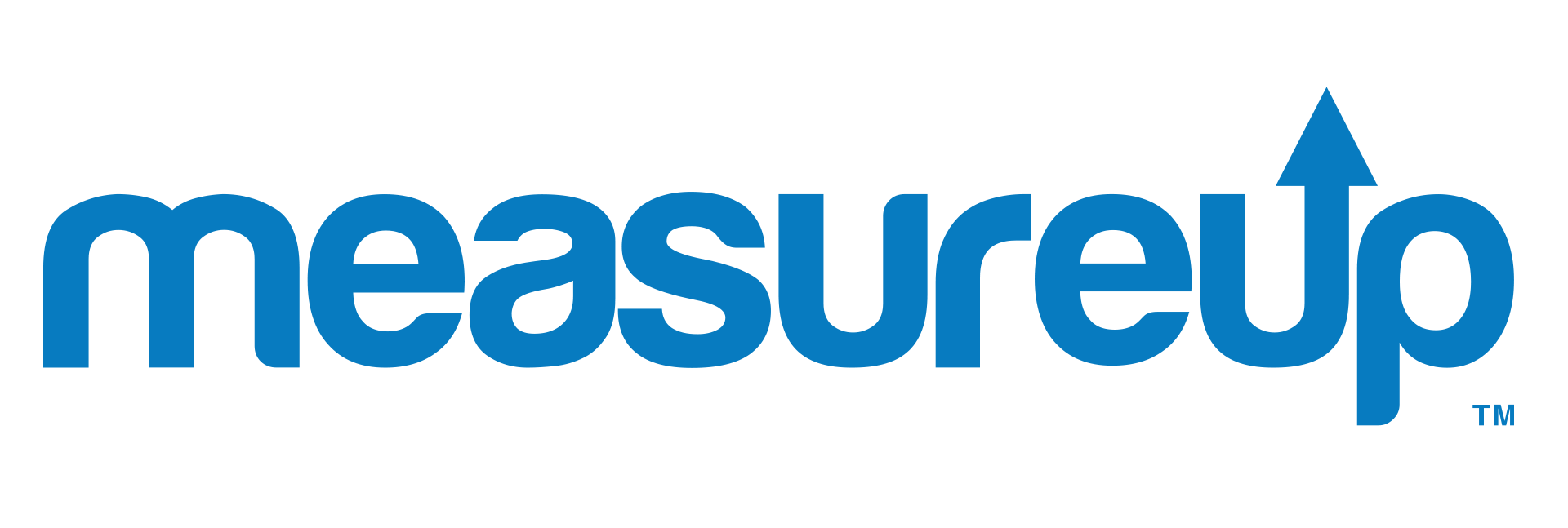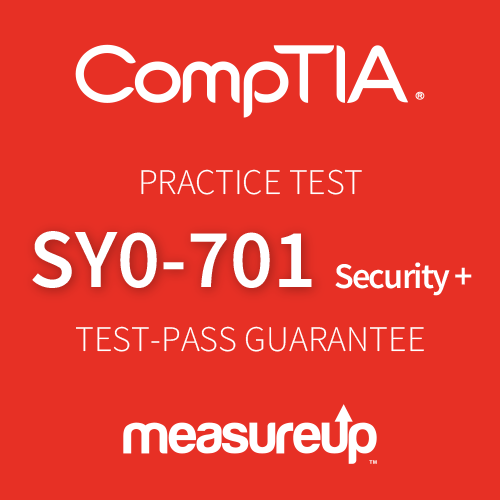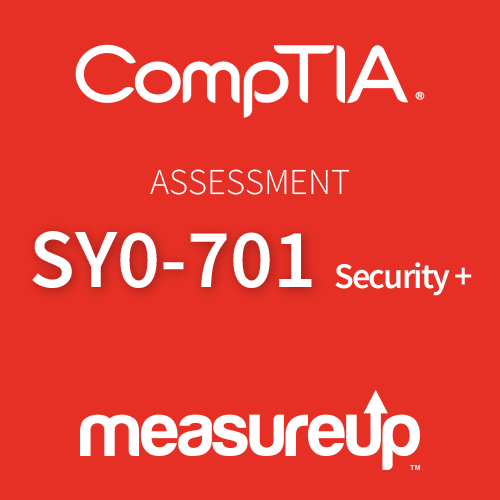The SY0-701: Security+ practice test is designed to help candidates prepare for and pass the CompTIA SY0-701 exam.
The SY0-701 practice test trains you in the skills and prerequisite knowledge necessary to pursue a career in IT as a cybersecurity professional.
Why should I take the SY0-701 exam?
The CompTIA SY0-701 exam is a global, vendor-neutral certification that awards you the perfect opportunity to break into the world of cybersecurity, verifying your knowledge and day-to-day application of fundamental IT skills and security functions. Although the CompTIA SY0-701 exam has no official prerequisites, solid preparation, in addition to approximately two years’ experience in a security focused IT role, is recommended.
The SY0-701 practice test includes two different modes: certification and practice mode. Certification mode allows you to assess your knowledge and discover your weak areas, with practice mode allowing you to focus on the areas that need development.
All Practice Tests, Up to 60% Off!
Choose the subscription plan that best fits your needs and enjoy full access to our entire practice tests catalog.
Start Now!
Full access to the Practice Test catalog
Get a Subscription Plan from $21.
Release Date: 12/2023
Job Role: Administrator
Language: English
The SY0-701 practice test contains 213 questions and covers the following objectives:
General Security Concepts - 33 questions
Compare and contrast various types of security controls.
Categories, Control types.
Summarize fundamental security concepts.
Confidentiality, Integrity, and Availability (CIA), Non-repudiation, Authentication, Authorization, and Accounting (AAA), Gap Analysis, Zero Trust, Physical security, Deception and disruption technology.
Explain the importance of change management processes and the impact to security.
Business processes impacting security operation, Technical implications, Documentation, Version control.
Explain the importance of using appropriate cryptographic solutions.
Public key infrastructure (PKI), Encryption, Tools, Obfuscation, Hashing, Salting, Digital signatures, Key stretching, Blockchain, Open public ledger, Certificates
Threats, Vulnerabilities, and Mitigations - 44 questions
Compare and contrast common threat actors and motivations.
Threat actors, Attributes of actors, Motivations.
Explain common threat vectors and attack surfaces.
Message-based, Image-based, File-based, Voice call, Removable device, Vulnerable software, Unsupported systems and
applications, Unsecure networks, Open service ports, Default credentials, Supply chain, Human vectors/social engineering.
Explain various types of vulnerabilities.
Application, Operating system (OS)-based, Web-based, Hardware, Virtualization, Cloud-specific, Supply chain, Cryptographic, Misconfiguration, Mobile device, Zero-day.
Given a scenario, analyze indicators of malicious activity.
Malware attacks, Physical attacks, Network attacks, Application attacks, Cryptographic attacks, Password attacks, Indicators.
Explain the purpose of mitigation techniques used to secure the enterprise.
Segmentation, Access control, Application allow list, Isolation, Patching, Encryption, Monitoring, Least privilege, Configuration enforcement, Decommissioning, Hardening techniques.
Security Architecture - 35 questions
Compare and contrast security implications of different architecture models.
Architecture and infrastructure concepts, Considerations.
Given a scenario, apply security principles to secure enterprise infrastructure.
Infrastructure considerations, Secure communications/access, Selection of effective controls.
Compare and contrast concepts and strategies to protect data.
Data types, Data classifications, General data considerations, Methods to secure data.
Explain the importance of resilience and recovery in security architecture.
High availability, Site considerations, Platform diversity, Multi-cloud systems, Continuity of operations, Capacity planning, Testing, Backups, Power.
Security Operations - 61questions
Given a scenario, apply common security techniques to computing resources.
Secure baselines, Hardening targets, Wireless devices, Mobile solutions, Wireless security settings, Application security, Sandboxing, Monitoring.
Explain the security implications of proper hardware, software, and data asset management.
Acquisition/procurement process, Assignment/accounting, Monitoring/asset tracking, Disposal/decommissioning.
Explain various activities associated with vulnerability management.
Identification methods, Analysis, Vulnerability response and remediation, Validation of remediation, Reporting.
Explain security alerting and monitoring concepts and tools.
Monitoring computing resources, Activities, Tools.
Given a scenario, modify enterprise capabilities to enhance security.
Firewall, IDS/IPS, Web filter, Operating system security, Implementation of secure protocols, DNS filtering, Email security, File integrity monitoring, DLP, Network access control (NAC), Endpoint detection and response (EDR)/extended detection and
response (XDR), User behavior analytics.
Given a scenario, implement and maintain identity and access management.
Provisioning/de-provisioning user accounts, Permission assignments and implications, Identity proofing, Federation, Single sign-on (SSO), Interoperability, Attestation, Access controls, Multifactor authentication, Password concepts, Privileged access management tools.
Explain the importance of automation and orchestration related to secure operations.
Use cases of automation and scripting, Benefits, Other considerations.
Explain appropriate incident response activities.
Process, Training, Testing, Root cause analysis, Threat hunting, Digital forensics.
Given a scenario, use data sources to support an investigation.
Log data, Data sources.
Security Program Management and Oversight - 40 questions
Summarize elements of effective security governance.
Guidelines, Policies, Standards, Procedures, External considerations, Monitoring and revision, Types of governance structures, Roles and responsibilities for systems and data.
Explain elements of the risk management process.
Risk identification, Risk assessment, Risk analysis, Risk register, Risk tolerance, Risk appetite, Risk management strategies, Risk reporting, Business impact analysis.
Explain the processes associated with third-party risk assessment and management.
Vendor assessment, Vendor selection, Agreement types, Vendor monitoring, Questionnaires, Rules of engagement.
Summarize elements of effective security compliance.
Compliance reporting, Consequences of non-compliance, Compliance monitoring, Privacy.
Explain types and purposes of audits and assessments.
Attestation, Internal, External, Penetration testing.
Given a scenario, implement security awareness practices.
Phishing, Anomalous behavior recognition, User guidance and training, Reporting and monitoring, Development, Execution.
The SY0-701 practice test contains 213 questions and covers the following objectives:
General Security Concepts - 33 questions
Compare and contrast various types of security controls.
Categories, Control types.
Summarize fundamental security concepts.
Confidentiality, Integrity, and Availability (CIA), Non-repudiation, Authentication, Authorization, and Accounting (AAA), Gap Analysis, Zero Trust, Physical security, Deception and disruption technology.
Explain the importance of change management processes and the impact to security.
Business processes impacting security operation, Technical implications, Documentation, Version control.
Explain the importance of using appropriate cryptographic solutions.
Public key infrastructure (PKI), Encryption, Tools, Obfuscation, Hashing, Salting, Digital signatures, Key stretching, Blockchain, Open public ledger, Certificates
Threats, Vulnerabilities, and Mitigations - 44 questions
Compare and contrast common threat actors and motivations.
Threat actors, Attributes of actors, Motivations.
Explain common threat vectors and attack surfaces.
Message-based, Image-based, File-based, Voice call, Removable device, Vulnerable software, Unsupported systems and
applications, Unsecure networks, Open service ports, Default credentials, Supply chain, Human vectors/social engineering.
Explain various types of vulnerabilities.
Application, Operating system (OS)-based, Web-based, Hardware, Virtualization, Cloud-specific, Supply chain, Cryptographic, Misconfiguration, Mobile device, Zero-day.
Given a scenario, analyze indicators of malicious activity.
Malware attacks, Physical attacks, Network attacks, Application attacks, Cryptographic attacks, Password attacks, Indicators.
Explain the purpose of mitigation techniques used to secure the enterprise.
Segmentation, Access control, Application allow list, Isolation, Patching, Encryption, Monitoring, Least privilege, Configuration enforcement, Decommissioning, Hardening techniques.
Security Architecture - 35 questions
Compare and contrast security implications of different architecture models.
Architecture and infrastructure concepts, Considerations.
Given a scenario, apply security principles to secure enterprise infrastructure.
Infrastructure considerations, Secure communications/access, Selection of effective controls.
Compare and contrast concepts and strategies to protect data.
Data types, Data classifications, General data considerations, Methods to secure data.
Explain the importance of resilience and recovery in security architecture.
High availability, Site considerations, Platform diversity, Multi-cloud systems, Continuity of operations, Capacity planning, Testing, Backups, Power.
Security Operations - 61questions
Given a scenario, apply common security techniques to computing resources.
Secure baselines, Hardening targets, Wireless devices, Mobile solutions, Wireless security settings, Application security, Sandboxing, Monitoring.
Explain the security implications of proper hardware, software, and data asset management.
Acquisition/procurement process, Assignment/accounting, Monitoring/asset tracking, Disposal/decommissioning.
Explain various activities associated with vulnerability management.
Identification methods, Analysis, Vulnerability response and remediation, Validation of remediation, Reporting.
Explain security alerting and monitoring concepts and tools.
Monitoring computing resources, Activities, Tools.
Given a scenario, modify enterprise capabilities to enhance security.
Firewall, IDS/IPS, Web filter, Operating system security, Implementation of secure protocols, DNS filtering, Email security, File integrity monitoring, DLP, Network access control (NAC), Endpoint detection and response (EDR)/extended detection and
response (XDR), User behavior analytics.
Given a scenario, implement and maintain identity and access management.
Provisioning/de-provisioning user accounts, Permission assignments and implications, Identity proofing, Federation, Single sign-on (SSO), Interoperability, Attestation, Access controls, Multifactor authentication, Password concepts, Privileged access management tools.
Explain the importance of automation and orchestration related to secure operations.
Use cases of automation and scripting, Benefits, Other considerations.
Explain appropriate incident response activities.
Process, Training, Testing, Root cause analysis, Threat hunting, Digital forensics.
Given a scenario, use data sources to support an investigation.
Log data, Data sources.
Security Program Management and Oversight - 40 questions
Summarize elements of effective security governance.
Guidelines, Policies, Standards, Procedures, External considerations, Monitoring and revision, Types of governance structures, Roles and responsibilities for systems and data.
Explain elements of the risk management process.
Risk identification, Risk assessment, Risk analysis, Risk register, Risk tolerance, Risk appetite, Risk management strategies, Risk reporting, Business impact analysis.
Explain the processes associated with third-party risk assessment and management.
Vendor assessment, Vendor selection, Agreement types, Vendor monitoring, Questionnaires, Rules of engagement.
Summarize elements of effective security compliance.
Compliance reporting, Consequences of non-compliance, Compliance monitoring, Privacy.
Explain types and purposes of audits and assessments.
Attestation, Internal, External, Penetration testing.
Given a scenario, implement security awareness practices.
Phishing, Anomalous behavior recognition, User guidance and training, Reporting and monitoring, Development, Execution.
System Requirements
A practice test is an informal exam designed to simulate the real test, whose objective is to prepare you better for what to expect on the real exam. A MeasureUp practice test contains around 150 questions covering the exam objective domains. In a MeasureUp practice test there are two different test-taking modes to prepare students for their certification: Certification Mode and Practice Mode.
- The Practice Mode lets users highly customize their testing environment. You can select how many questions they want to include in the assessment, the maximum time to finish the test, the possibility to randomize the question order, and select how and which questions will be shown in the test.
- The Certification Mode simulates the actual testing environment users will encounter during a certification exam. They are timed and do not let users request the answers and explanations to the questions until the end of the test.
How does it work?
Take a look at our video to see exactly how MeasureUp’s practice tests work.
Why should you trust MeasureUp over free Learning material?
| MeasureUp | Free learning material |
|
|
|
|
|
|
|
|
What can I expect to earn if I pass the CompTIA Security+ SY0-701 exam?
On passing the CompTIA Security+ SY0-701, and obtaining a job as a junior administrator, you can expect to earn a salary in the United States of approximately $80,000.
Source: Nigel Franks International.
Continue growing with MeasureUp’s learning material. Explore the CompTIA Cybersecurity learning path.
![]() Core Skills:
Core Skills:
CompTIA A+
![]() Cybersecurity:
Cybersecurity:
COMPTIA SECURITY+ PRACTICE TEST
Why should you use our CompTIA Security+ practice test?
The MeasureUp SY0-701 CompTIA Security+ practice test is the most realistic simulation of the actual certification exam on the market, giving you the perfect opportunity to pass the official exam on the first go. With our Test Pass Guarantee, you can be sure of success as we offer all of your money back if you do not pass. The SY0-701 practice test has been created by leading experts in the field of cybersecurity.
Why should you trust CompTIA Security+ Practice Test from MeasureUp over free learning material?
The MeasureUp SY0-701 practice test has many benefits over free learning material, including:
- A higher number of questions, so more opportunities to learn.
- Detailed explanations with online references of correct and incorrect answers.
- A total of fourteen different question types, replicating the look and feel of the real exam.
- Customizable based on your needs. Certification & Practice Modes.
- Test Pass Guarantee.
- Written, reviewed, and edited by experts.
How to use the CompTIA Security+ Practice Test?
You can use the SY0-701 practice test in two different modes: certification and practice mode. The first gives you the possibility to assess your knowledge and discover your weak areas, and the second allows you to focus on these areas, ensuring you spend your time wisely. We first recommend you take the SY0-701 practice test in certification mode. By studying the generated report on completing the test, you will get a helpful overview of which areas require further attention. You should then take the test in practice mode in order to develop those areas. Once you are confident you have improved your knowledge in these areas, you can re-take the test in certification mode and, on passing 3 consecutive times with a score of 90%, you know you are exam ready!
Will the questions be the same as the actual exam?
Although the questions will emulate those of the official exam in terms of style, content, level of difficulty, for reasons of copyright they will not be exactly the same. This will allow you to fully understand the content you are studying so that, no matter how the questions are focused, you can be confident you are covering the same material and that you will have no problem in passing the exam.
COMPTIA SECURITY+ CERTIFICATION EXAM
How can I prepare for CompTIA Security+ certification exam?
- Review the SY0-701 exam domains carefully.
- Create your study plan for your preparation.
- Enroll for the MeasureUp practice tests. Our practice tests emulate the official exam in terms of style, format, skill sets, question structure, and level of difficulty, and can be taken in two different formats: practice mode and certification mode.
- Practice, practice, practice! After reviewing all the questions included in the test, checking the correct answers, reading through the explanations regarding all the different answer options, and consulting the carefully online references, it is now time to move across to Certification Mode. This is the closest experience you’ll get to the real exam. Once you’re able to pass Certification Mode twice consecutively with a score of 90% or more, you know you are… Exam ready!
How can I pass the CompTIA Security+ SY0-701?
The first thing to note is that there are no formal prerequisites to the SY0-701 exam, which means that you can sit it without having taken any other security or IT exam. However, you are recommended to have approximately two years’ experience working in an IT administrator role focused on security. In addition to this experience, you should prepare carefully for the SY0-701 Security + exam. This can be done by studying with the MeasureUp SY0-701 practice test. This practice test allows you to discover what your weak areas are and then allows you to focus in on them, allowing you use your time wisely. The SY0-701 practice test also lets you gain invaluable exam experience.
What is the difference between the SY0-601 and the SY0-701?
As cybersecurity trends and techniques are in constant evolution, certifications that validate these skills also need to evolve. Consequently, the SY0-601 will be retired by CompTIA in July 2024 and will be completely replaced by the SY0-701 certification.
When does the CompTIA Security+ expire?
Like most CompTIA exams, the SY0-701 will expire three years after the date you pass the exam and must be renewed before this time.
What is the CompTIA Security+?
The CompTIA SY0-701 exam is a global, vendor-neutral certification that verifies your knowledge and day-to-day application of fundamental IT skills and security functions, giving you a solid entry point into a career as a cybersecurity professional.

 Digital Badge Included
Digital Badge Included

![[Retired Exam] CompTIA Practice Test SY0-601: CompTIA Security+](https://www.measureup.com/media/catalog/product/s/y/sy0-601-retired.png?optimize=high&bg-color=255,255,255&fit=bounds&height=510&width=510&canvas=510:510&format=jpeg)

